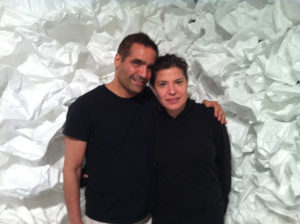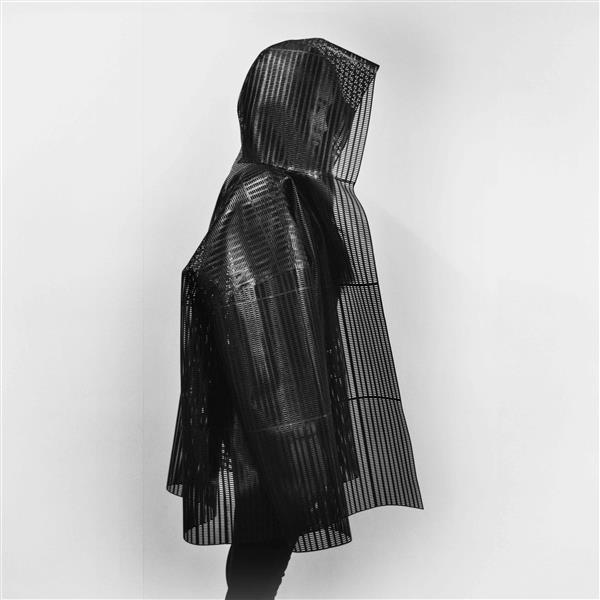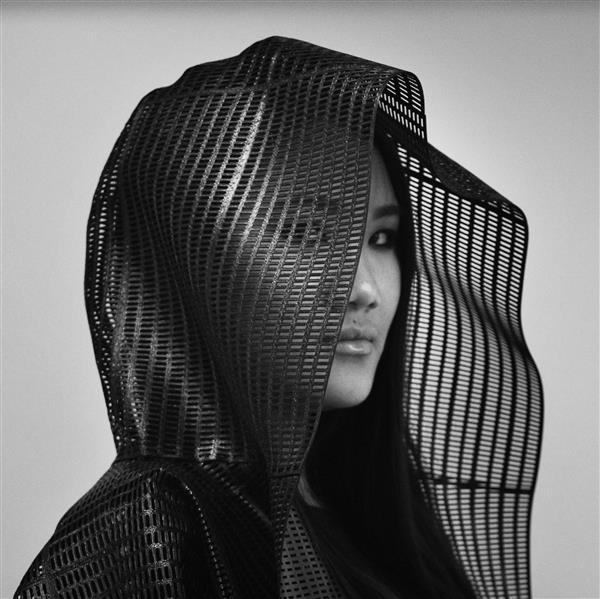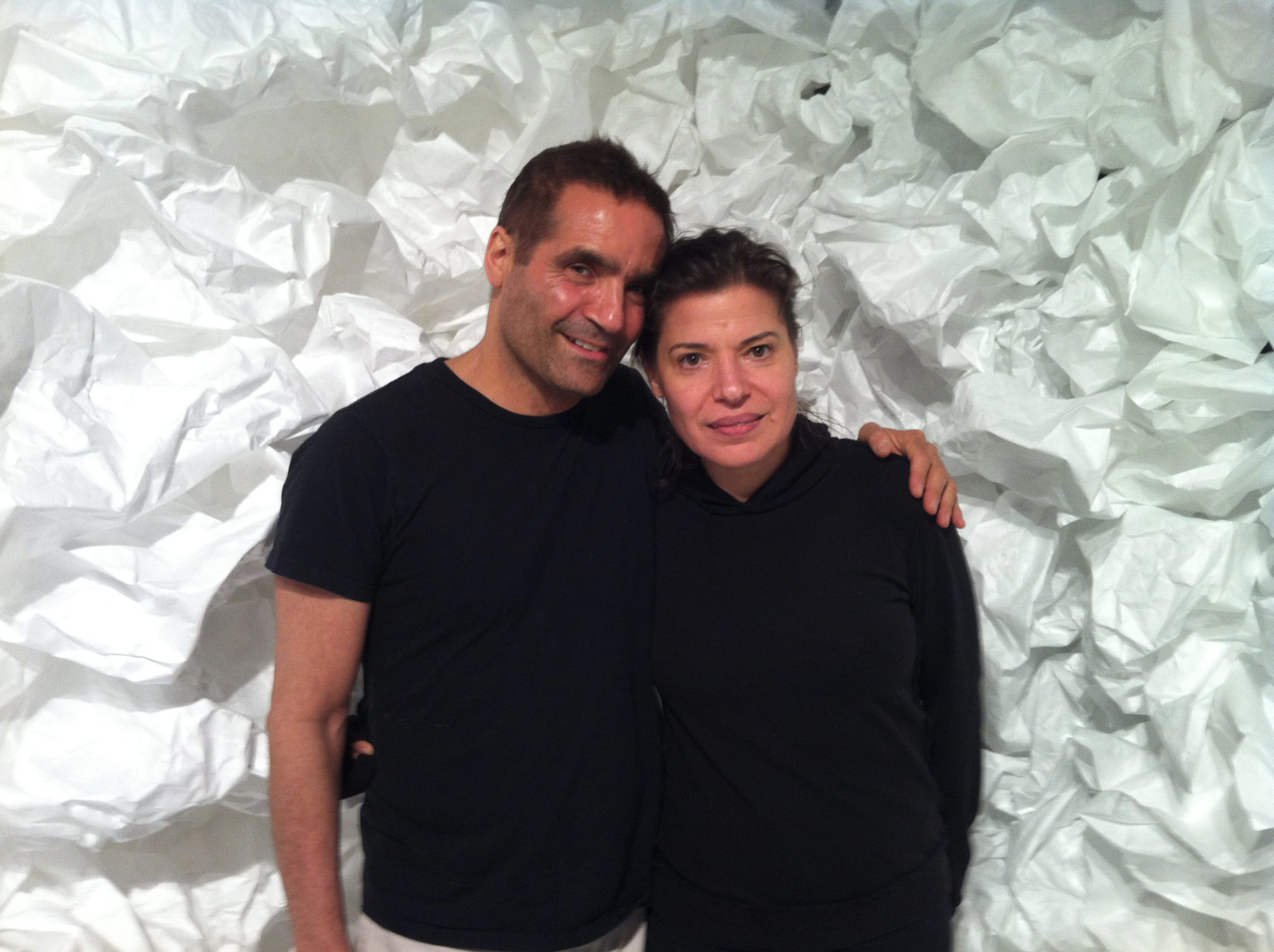 3D printing still needs to prove itself in the fashion industry. Sylvia Heisel, fashion designer associates 3D printing technology with new materials to create sustainable and wearable pieces. She partners with Scott Taylor, an artist known for his steel sculptures and installations.
3D printing still needs to prove itself in the fashion industry. Sylvia Heisel, fashion designer associates 3D printing technology with new materials to create sustainable and wearable pieces. She partners with Scott Taylor, an artist known for his steel sculptures and installations.
Together, they give life to environments or events that highlight contemporary design, art, fashion and new technologies.
Aware of the importance of 3D printing technology in the fashion industry, they share today their experience and the long road ahead for this technology with great potential.
Sylvia Heisel & Scott Taylor: their work and 3D Printing technology
Could you tell us more about your work and how you came to 3D printing?
We develop 3D printing for fashion, 3D apparels and wearables in general. We came to 3D printing as a new way of making things because fashion talks about what is new but technology is the oldest major industry in the world.
In the fashion industry, women sitting behind sewing machines are not a very cool process. It produces huge amount of waste. So, the real question was…how can we use technology to change fashion?
3D printing is another way of making clothes. It is not going to replace sewing or knitting but it would be a third alternative and it offers amazing potential in “zero waste”. It includes manufacturing on demand and materials that are compostable. It is a digital supply change that can be traced but it’s very early.
We develop the software and hardware for appropriate 3D printed clothes. The goal is to create clothes that show the possibilities of this technology.
Garments’ manufacturing
What are the materials you use the most to manufacture clothes?
We are working with TPU (thermoplastic polyurethane), a flexible material. There is a lot of development of compostable, biodegradable materials and bioplastics. Bioplastic has a lot of chemical similarities with polyester. So, going forward, 3D printing should be able to make textiles that are as soft and flexible as polyester. And they can be biodegradable but for now, we cannot use it as scale.
Financially, they are very expensive. Regarding the development in materials, there is a lot of development in flexible materials for FDM (Fused Deposit Modeling).
In terms of 3D printing for fashion and apparels, we believe that it would be more FDM than SLA (Stereolithography) or SLS (Selective Laser Sintering) because of the cost and flexible bioplastics.
Do you use a 3D printer specifically designed and manufactured for garments?
No. We built a large machine designed for all sorts of textile and we use other machines as well. Mostly, we work with Ultimaker and Makerbot and going forward, we will work with other manufacturers who could create specific machines for our needs. We expect they could adapt what they do to fit our needs.
How many garments could you 3D print?
For now, it’s very slow. It’s about 30 hours for a dress – printing time. And then the pieces have to be assembled. However, the printing time is not the sewing time. A year ago, it was twice today’s time. It’s moving, it’s getting faster.
A project has been launched to find a solution that would cut time and make things much faster and more reliable.
Do you encounter some difficulties in your work?
Yes! With 3D printing, there is always something that might go wrong. But as the technology moves forward, those problems will be reduced or solved. Every time we hear a noise, we are afraid something might go wrong but it’s getting better and it’s getting there.
Target & Consumption
Who is your primary target?
Our target at this point is to work with fashion companies that are interested in developing 3D printing and 3D printing companies interested in developing apparels. We do not focus on the consumer. The consumer just wants cool new stuff.
What about exhibitions?
Each piece of clothes is a new innovation. We did pieces of clothes for exhibitions that are under art; and for other fashion brands, that wanted something within 3D printing.
We also do a lot of teaching in fashion schools. We need to teach people there is a new way of doing things and in fashion schools, they do not teach any of this. They don’t have 3D printers for arts ‘students; and only let the engineers use them. We want to create a new market and interest and show that there is a new way of creating things.
What is your most successful creation?
The coat. The dress had to be the right size and for a woman and we finally created a one size dress. It is not fragile.

3D printing becomes less strange to people who wear something that has been 3D printed. You can style it and say “this is what a 3D printed garment looks like”.

3D Printing market
In general, what do you think about the use of 3D printing in the fashion tech market?
It is not a mature market yet. Right now, for fashion, it’s about samples, prototypes, some customers’ accessories and runway pieces. The technology is not ready for production yet but it will be in five years. At the rate it is going now, it will be another way of making prices competitive.
A good advantage to increase sales?
The consumer does not care about how things are made. When you sell the fashion, the consumer cares about how it looks on them, it fits and the beauty.
However, from a manufacturing point of view, you could make thing you have never made before. You can customize…and that’s great!
Prospects of development
Could we expect a new creation in the upcoming months?
We have a piece we are doing now for an exhibition in London: the Wired Energy conference that will take place in October. It will be a premiere to discover. #Staytuned
For further information about 3D Printing, follow us on our social networks and subscribe to our newsletter!
//pagead2.googlesyndication.com/pagead/js/adsbygoogle.js
(adsbygoogle = window.adsbygoogle || []).push({});






